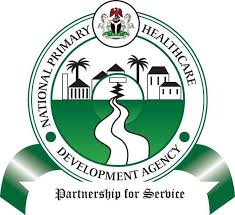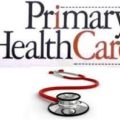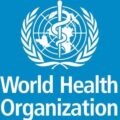What is primary health care?
Primary health care is a whole-of-society approach to health and well-being centered on the needs and preferences of individuals, families and communities. It addresses the broader determinants of health and focuses on the comprehensive and interrelated aspects of physical, mental and social health and wellbeing.
It provides whole-person care for health needs throughout the lifespan, not just for a set of specific diseases. Primary health care ensures people receive comprehensive care – ranging from promotion and prevention to treatment, rehabilitation and palliative care – as close as feasible to people’s everyday environment.
Primary health care is rooted in a commitment to social justice and equity and in the recognition of the fundamental right to the highest attainable standard of health, as echoed in Article 25 of the Universal Declaration on Human Rights: “Everyone has the right to a standard of living adequate for the health and wellbeing of himself and of his family, including food, clothing, housing and medical care and necessary social services […]”.
The concept of primary health care has been repeatedly reinterpreted and redefined. In some contexts, it has referred to the provision of ambulatory or first-level of personal health care services. In other contexts, primary health care has been understood as a set of priority health interventions for low-income populations (also called selective primary health care). Others have understood primary health care as an essential component of human development, focusing on the economic, social and political aspects.
WHO has developed a cohesive definition based on three components:
- meeting people’s health needs through comprehensive promotive, protective, preventive, curative, rehabilitative, and palliative care throughout the life course, strategically prioritizing key health care services aimed at individuals and families through primary care and the population through public health functions as the central elements of integrated health services;
- systematically addressing the broader determinants of health (including social, economic, environmental, as well as people’s characteristics and behaviors) through evidence-informed public policies and actions across all sectors; and
- empowering individuals, families, and communities to optimize their health, as advocates for policies that promote and protect health and well-being, as co-developers of health and social services, and as self-carers and care-givers to others.
Why is primary health care important?
Renewing primary health care and placing it at the center of efforts to improve health and wellbeing are critical for three reasons:
- Primary health care is well-positioned to respond to rapid economic, technological, and demographic changes, all of which impact health and well-being. A recent analysis found that approximately half of the gains in reducing child mortality from 1990 to 2010 were due to factors outside the health sector (such as, water and sanitation, education, economic growth). A primary health care approach draws in a wide range of stakeholders to examine and change policies to address the social, economic, environmental and commercial determinants of health and well-being. Treating people and communities as key actors in the production of their own health and well-being is critical for understanding and responding to the complexities of our changing world. SEE: Public Health Surveillance: Steps, Types, Importance
2. Primary health care has been proven to be a highly effective and efficient way to address the main causes and risks of poor health and well-being today, as well as handling the emerging challenges that threaten health and well-being tomorrow. It has also been shown to be a good value investment, as there is evidence that quality primary health care reduces total healthcare costs and improves efficiency by reducing hospital admissions. Addressing increasingly complex health needs calls for a multisectoral approach that integrates health-promoting and preventive policies, solutions that are responsive to communities, and health services that are people-centred. Primary health care also includes the key elements needed to improve health security and prevent health threats such as epidemics and antimicrobial resistance, through such measures as community engagement and education, rational prescribing, and a core set of essential public health functions, including surveillance. Strengthening systems at the community and peripheral health facility level contributes to building resilience, which is critical for withstanding shocks to the health system.
3. Stronger primary health care is essential to achieving the health-related Sustainable Development Goals (SDGs) and universal health coverage. It will contribute to the attainment of other goals beyond the health goal (SDG3), including those on poverty, hunger, education, gender equality, clean water and sanitation, work and economic growth, reducing inequality and climate action.
13 Components of primary health care in Nigeria
Elements of primary health care include the activities of clinical institutions, preventive and curative measures, the search for practical solutions to local health problems.
The PHC model is based on the interaction of medical and epidemiological services, the precise identification of specific problems, the involvement of the population in solving health problems, and the availability of medical care. Here are the 13 most important parts:
- Medical and epidemiological skills and services
- Quality medicines
- Specific programs to solve local health problems
- Continuity In his professional activities, the doctor is not limited to a particular episode of the disease but is engaged in the protection of human health for significant periods of time.
- Integration (coordination) of medical, preventive, and rehabilitation institutions
- A broad approach to the health problem It includes the factors of behavior, external and social relations.
- The mobility of medical care Sometimes the salvation of human life depends on only a few minutes, physicians should always be ready to come to the rescue.
- PHC accessibility This component of primary health care means the elimination of territorial, financial, social, and cultural obstacles.
- Proper food and nutrition Most health problems begin with low-quality food and contaminated water. It is important not only to cure but also to prevent diseases.
- Education Society must be aware of the most common diseases and be able to overcome them.
- Compliance with the sanitary standards
- Immunization Getting the basic vaccine kit protects the citizens from the most dangerous infections.
- Care for pregnant mothers and children Childhood is a period of greatest vulnerability. Therefore, caring for babies has a prevalent significance. This approach provides global growth and prosperity for the next generations. See TBA In Nigeria
Primary health care (PHC) is an essential element of the new concept of public health. It’s based on a quantitative assessment of various aspects of health problems and creating effective strategies to improve the situation. SEE: Equity Vs Equality: Understanding The Difference






